Image Archive



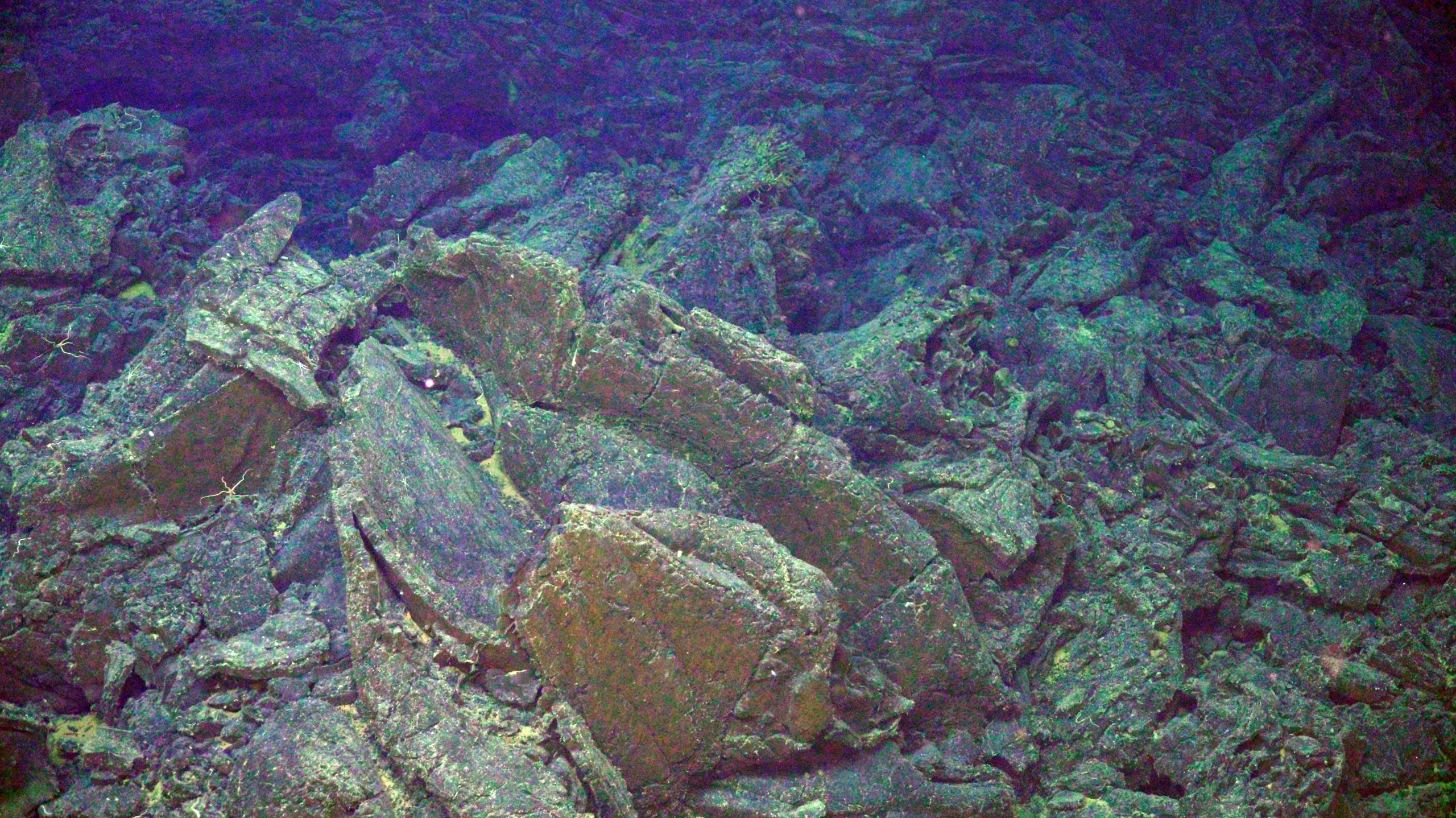



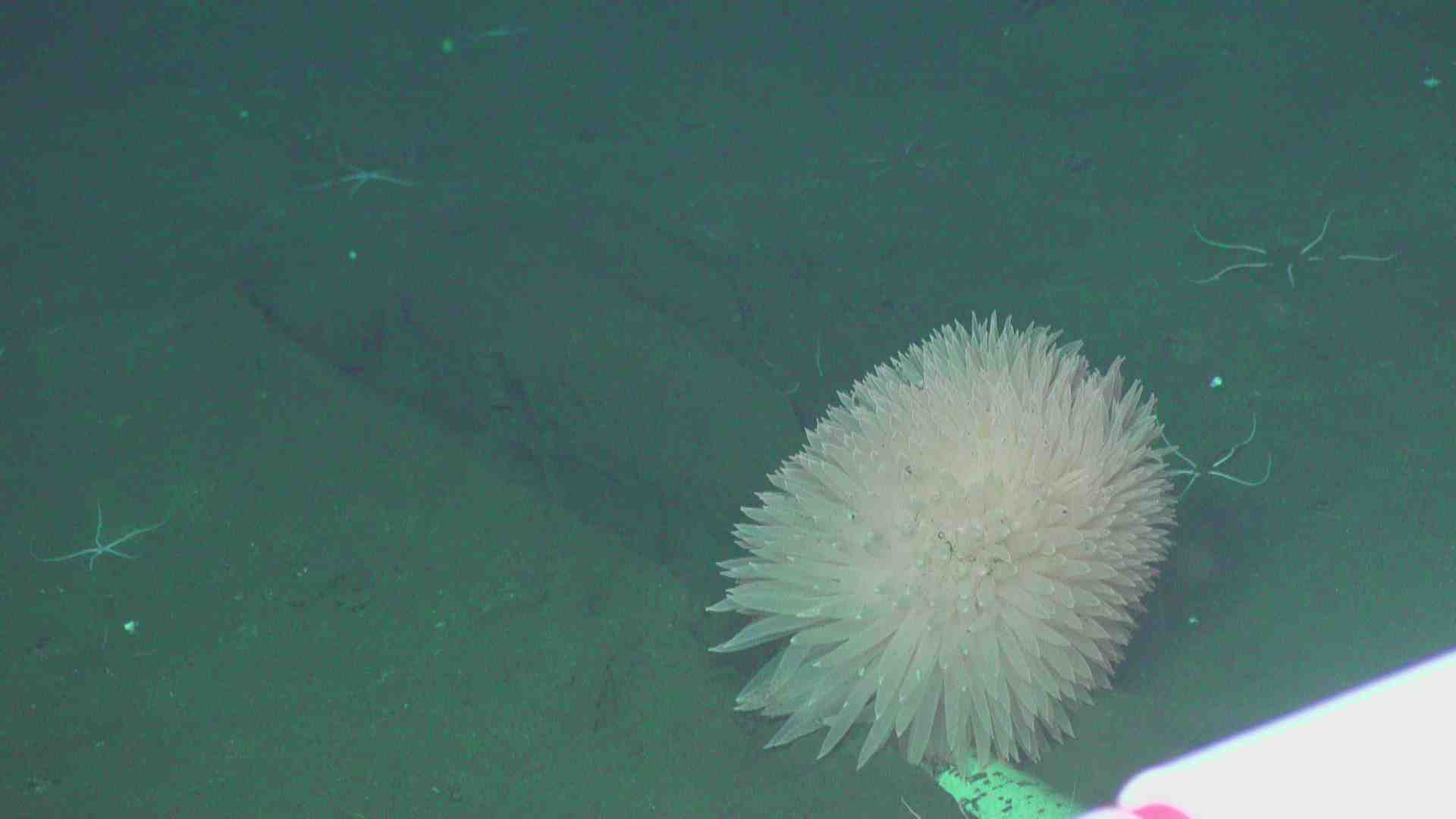













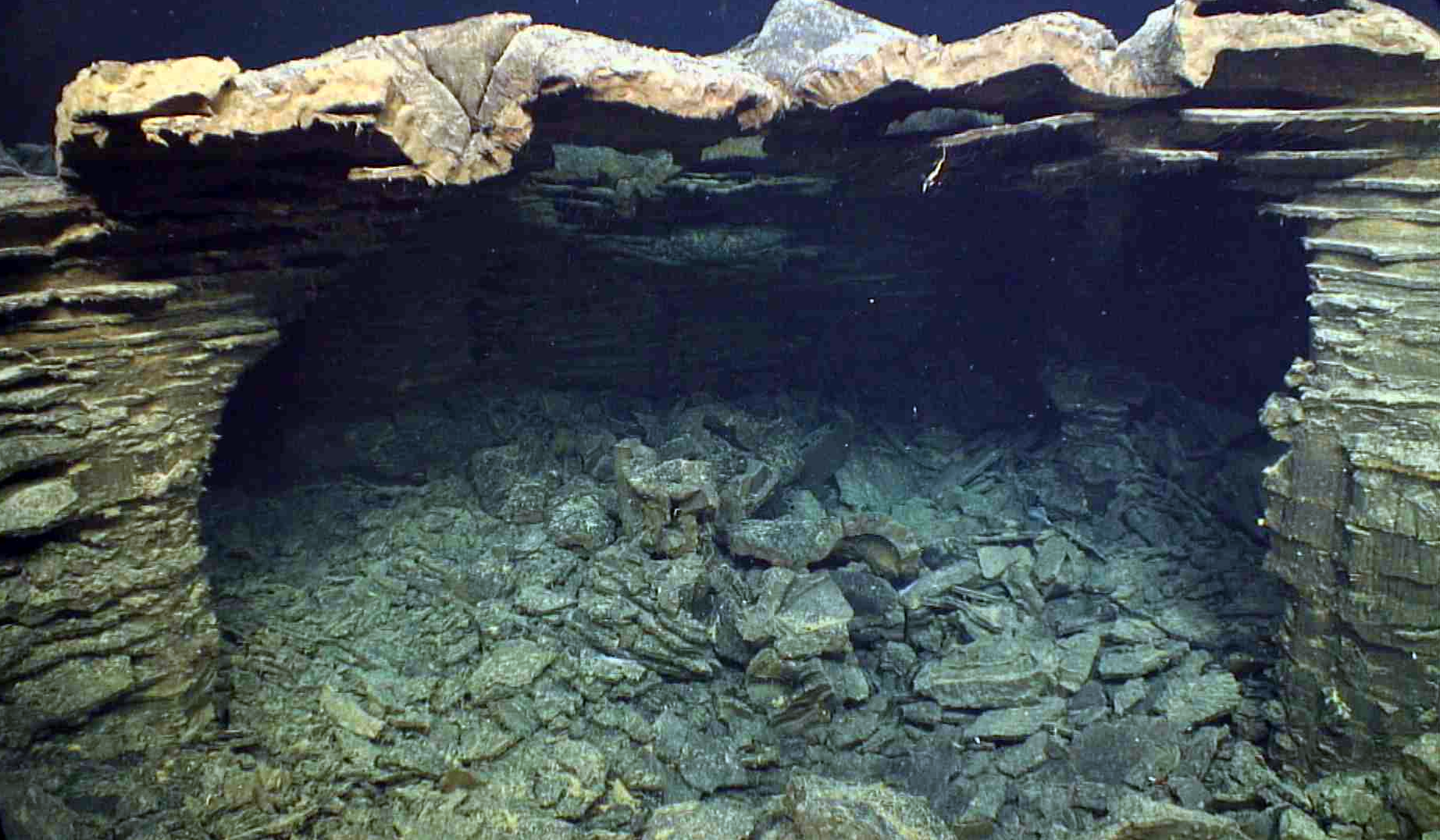



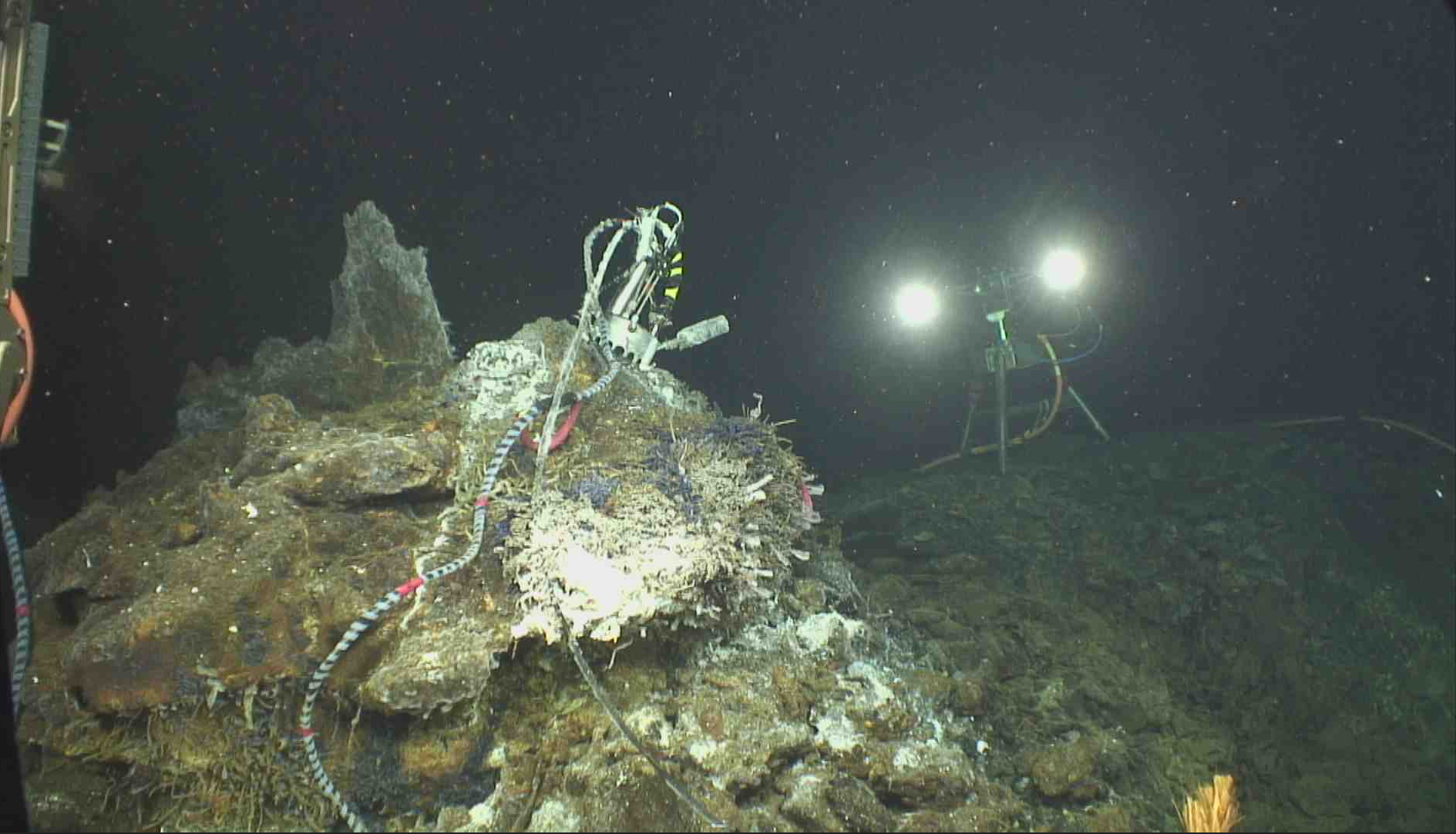

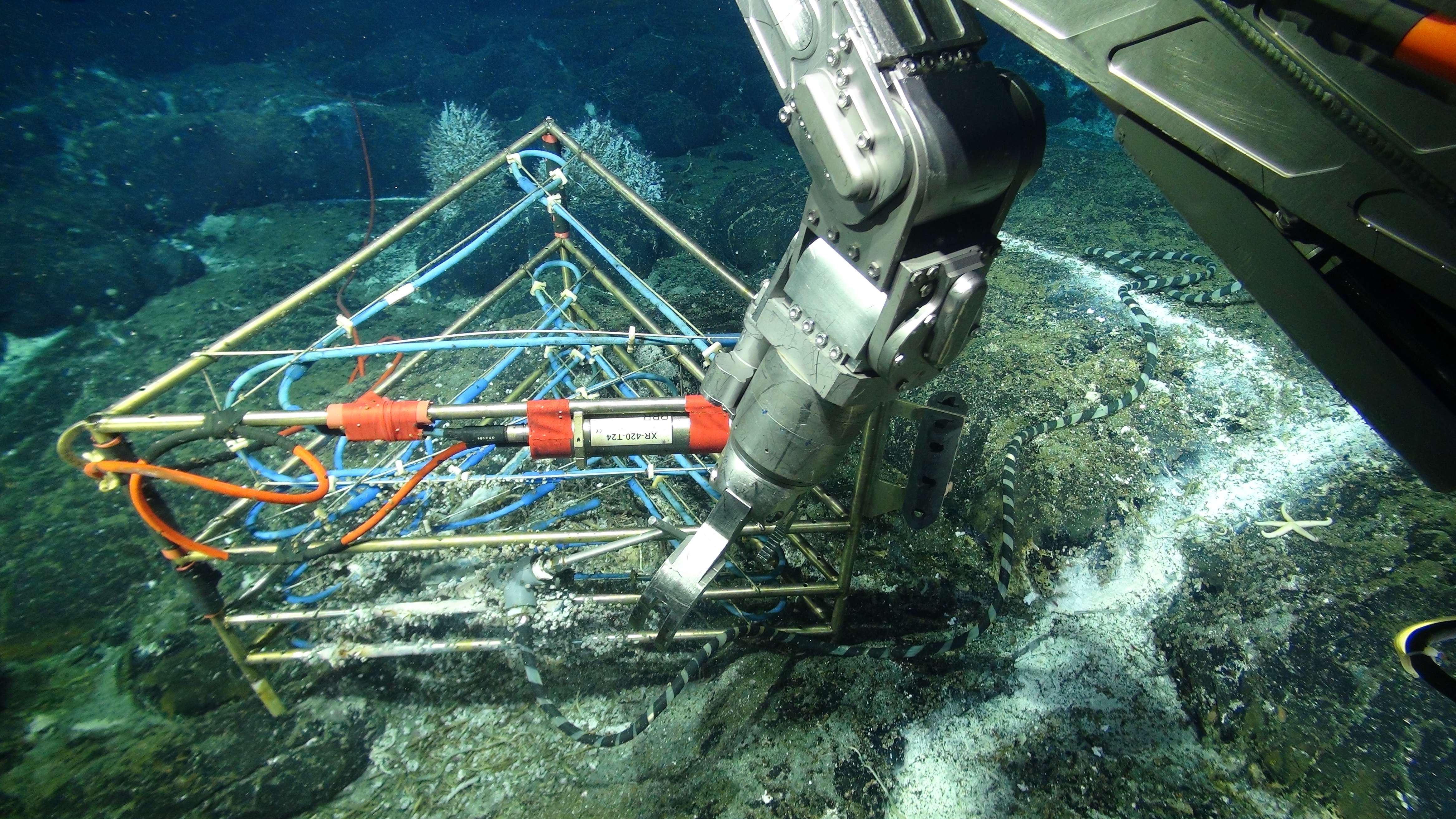

Inside the ROV Jason control van working at the International District hydrothermal field, nearly a mile beneath the surface. Credit. S. Karaduzovic, University of Washington.

The medium powered junction box MJ03E is moved into position for latching into with Jason. Credit: UW/NSF-OOI/WHOI:V20.

The medium powered junction box at the Eastern Caldera site sits atop lobate flows at Axial Seamount. Credit: UW/NSF-OOI/WHOI.V20

Broken basaltic lava marks a jumbled sheet flow on the east side of Axial Caldera. Credit: UW/NSF-OOI/WHOI.V20.

A blob sculpin (Psychrolutes sp.) aka blobfish, at International District on Axial Seamount during VISIONS'20. Credit: UW/NSF-OOI/WHOI V20.

The Deep Profiler vehicle is latched onto the mooring cable at Axial Base during the VISIONS 20 expedition. Credit: UW/NSF-OOI/WHOI.V20

An instrumented Deep Profiler is installed at Axial Base - over a 17 month period instrumented vehicles transited over 8 million ft of ocean water. Credit. UW/NSF-OOI/WHOI. V20.

A pom-pom anemone at Axial Base, moving around the legs of the HPIES instrument. Photo Credit: UW/NSF-OOI/WHOI; V19

A Graneledone octopus peeking at Jason around the side of the Axial Base HPIES instrument. Photo Credit: UW/NSF-OOI/WHOI; V19

Surveying the HPIES deployment location at Axial Base during VISIONS'19. Photo credit: UW/NSF-OOI/WHOI; V19

A rattail fish swimming near the Axial Base junction boxes during a CTD deployment. Photo credit: UW/NSF-OOI/WHOI; V19

A 'frozen' lava lake is captured by the cameras on the ROV Jason at the summit of Axial Seamount. Credit: UW/NSF-OOI/WHOI, V18.

Organisms colonize the outer walls of the 16 m-tall hydrothermal edifice called El Guapo. The community structure changes with height above seafloor. Here, limpets, red scale worms and blue protists (ciliates) colonize the outer sulfide walls of the structure. Credit: UW/NSF-OOI/WHOI, V18.

Near the summit of the ~16 m-tall El Guapo chimney, sulfide worms, and tubeworms colonize the younger part of the new sulfide growth. Credit: UW/NSF-OOI/WHOI, V18.

On July 4, the Regional Cabled Array high definition camera, built by the UW, was reinstalled at the actively venting chimney 'Mushroom' in the ASHES hydrothermal field on Axial Seamount. Credit: UW/NSF-OOI/WHOI, V18.

A beautiful ropey, jumbled sheet flow covers the seafloor at ~1500 m beneath the oceans' surface at the summit of Axial Seamount. The lava was erupted in April 2011. Credit: UW/OOI-NSF/WHOI; J2-980; V17.

Healthy tube worms grow along a venting fracture in the 2011 glassy lava flow at the summit of Axial Seamount. Credit: UW/OOI-NSF/WHOI; J2-980; V17.

A dense colony of tube worms awash in warm diffusely venting fluids grow on the April 2011 lava flow at the summit of Axial Seamount. UW/OOI-NSF/WHOI; J2-980; V17.

A small cluster of healthy Ridgeia tube worms grow near Skadis' Cauldron, a highly active snowblower in 2011. Credit: UW/OOI-NSF/WHOI; J2-980; V17.

Tubeworms with red plumes grow on the side of an odd basalt formation formed as part of a fossilized lava lake at the summit of Axial Seamount in 2011. Depth is ~1500 m. UW/OOI-NSF/WHOI; J2-980; V17.

A skylight in the April 2011 lava flows shows where lava had drained out in the subsurface, leaving a cavern. The front porch of the ROV Jason is in the foregound. UW/OOI-NSF/WHOI; J2-980; V17.

The ROV Jason looks into the remnants of where a lava pond once formed. Most of the roof has subsequently collaped. Water depthe here is ~ 1500 m. UW/OOI-NSF/WHOI; J2-980; V17.

A fossilized whirl in a lava lake that was active during the April 2011 eruption of Axial Seamount. Credit: UW/OOI-NSF/WHOI; J2-980; V17.

During Jason Dive J2-980, the remnants of multiple lava lakes from the April 2011 eruption of Axial Seamount were encountered. The bathtub rings mark the progressive lowering of the "lake". Credit: UW/OOI-NSF/WHOI; J2-980; V17.

Columns in a collapsed area that once hosted a lava lake are reminiscent of an ancient city. Rings mark lowering of the lake as lava drained out. Fossilized drips of lava are preserved hanging from the ceiling. A rattail fish explores the site. This is part of the 2011 eruption at Axial. Credit: UW/OO-NSF/WHOI; J2-980; V17.

The Cabled Array digital still camera in the International District Hydrothermal Field photographs Jason during dive J2-980. Credit:UW/OOI-NSF/WHOI, V17

LED lights on the high definition camera, built by the Applied Physics Laboratory at the University of Washington, light up a ~1 m tall, young black smoker chimney at the base of the actively venting Mushroom edifice on Axial Seamount (water depth ~1500 m). The image, taken with the ROV Jason, shows the camera being tested by UW engineers during VISIONS16. They were in the Operations Center, located 300 miles to the east at the School of Oceanography. Here, they were commanding/controlling the camera live through the terrestrial and submarine Internet as part of the NSF Cabled Array infrastructure. Credit: UW/NSF-OOI/WHOI; V16.

A 3D temperature (thermistor) array housing 24 sensors rests above a small diffuse flow site a few meters away from the actively venting black smoker edifice called Mushroom in the ASHES hydrothermal field on Axial Seamount. This cabled instrument was designed and built by G. Proskurowski, UW School of Oceanography. Limpets have colonized the frame and cable housing the thermistors. An osmotic fluid sampler is inserted into the diffuse flow site to obtain chemistry coregistered with temperature. Credit: UW/NSF-OOI/WHOI; V16.
- Anemone
- Animal
- Arthropod
- ASHES
- Axial
- Axial Base
- Axial Biology
- Axial Caldera
- Bacteria
- Basalt Lava
- BEP
- Biofouling
- biolgoy
- Biology
- Camds
- Camera
- Camhd
- Central Caldera
- Ciliates
- Cnidaria
- Coastal Biology
- Crab
- Deep Profiler Mooring
- Dive Highlights
- Eastern Caldera
- Echinoderms
- Endurance Array
- Engineering Team
- ENLIGHTEN 10
- Exploratorium
- Fish
- Geology
- HD Camera
- HPIES
- Hydrate Ridge
- Hydrates
- Hydrophone
- Hydrothermal Vents
- Illustration
- Inshore 80 Meters
- Instrument
- International District
- J-BOX
- Jason
- Jellyfish
- Junction Box
- K12
- Lava
- Mollusk
- Moorings
- Nodes
- Nudibranch
- Octopus
- OOI
- Oregon Offshore
- Oregon Offshore 600 m
- Oregon Shelf
- Oregon Slope Base
- People
- PN1B
- PN1D
- Polychaetes
- PPSDN
- Primary Node
- RASFL
- ROCLS
- ROPOS
- ROPOS Dives
- ROV Team
- RV Revelle
- RV Sikuliaq
- RV Thompson
- Salp
- Sample
- SC13
- Science Team
- Sea Cucumber
- Sea Star
- Sea Urchin
- Seafloor
- Seismometer
- Sensors
- Shallow Profiler Mooring
- Shark
- Shipboard
- Shore Station
- Slope Base
- Smoker
- Soft Coral
- Southern Hydrate Ridge
- Sponge
- Squid
- Students
- Students & Guest Participants
- Tmpsf
- Tubeworms
- VISIONS 11 Leg 1
- VISIONS 11 Leg 2
- VISIONS 11 Viewers
- VISIONS 13
- VISIONS 14
- VISIONS 15
- VISIONS 16
- VISIONS 17
- VISIONS 18
- VISIONS 20
- VISIONS 22
- VISIONS 23
- Visualization
